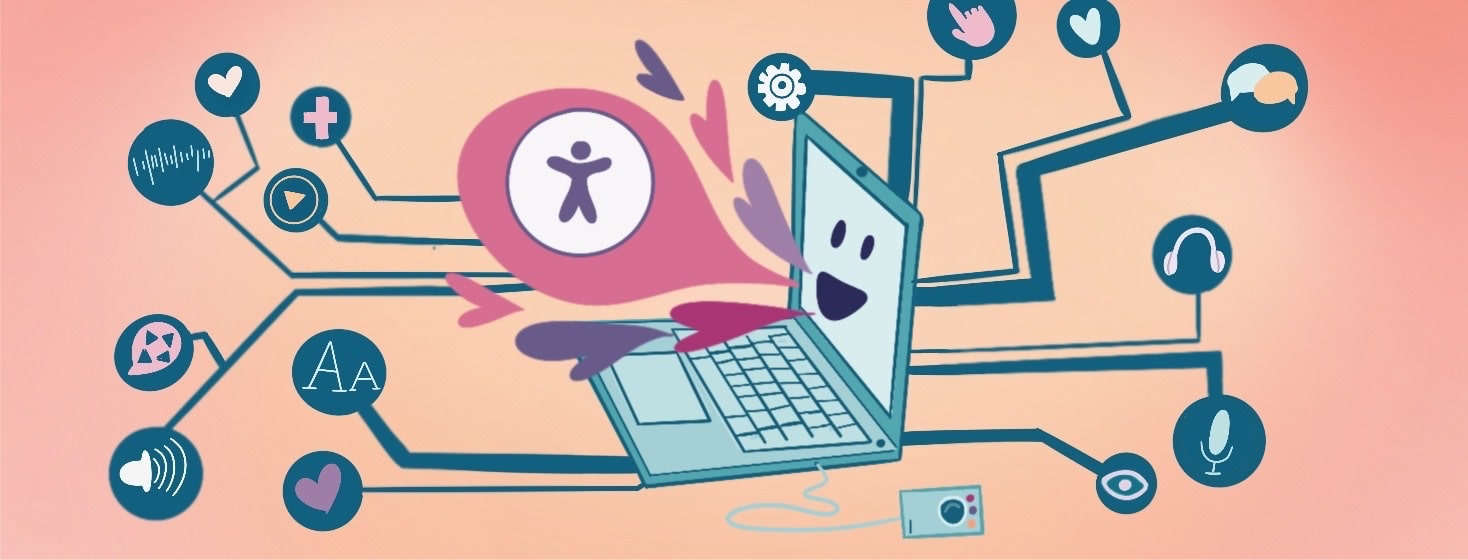Please click on the link for my video 🙂

https://drive.google.com/file/d/1v40p37wPQS0rKCk6RkzzTdejC26AEHVG/view?usp=sharing


Please click on the link for my video 🙂

https://drive.google.com/file/d/1v40p37wPQS0rKCk6RkzzTdejC26AEHVG/view?usp=sharing

In the heart of every classroom, a quiet revolution is taking place, fueled not by textbooks or lectures, but by the gentle hum of digital tools. These tools, known as productivity suites, are transforming the way we teach and learn, opening doors to new possibilities and opportunities.
Imagine a classroom where students collaborate seamlessly, where teachers provide instant feedback, and where learning transcends the boundaries of time and space. That’s the power of productivity suites like Microsoft Office 365 and Google Workspace. They’re not just software; they’re bridges that connect students and teachers, enabling a more interactive and engaging learning experience.
But this transformation is not without its challenges. While productivity suites have become ubiquitous in schools and universities worldwide, not all students have equal access to these tools. This digital divide can deepen existing inequalities, highlighting the need for policymakers to ensure that all students have access to the tools they need to succeed.
Despite these challenges, productivity suites have the potential to revolutionize education. They enable teachers to create dynamic lessons, collaborate with students in real-time, and provide personalized feedback. These tools foster collaboration, critical thinking, and creativity – essential skills for success in the digital age.
However, there’s a risk of over-reliance on technology, which could hinder students’ ability to think critically. Striking a balance between digital tools and traditional teaching methods is crucial to ensure that students develop a well-rounded skill set.
Moreover, productivity suites play a vital role in developing digital literacy among students. From formatting a document to creating complex presentations, these tools empower students to become proficient in essential digital skills. However, there’s still a gap in preparing students for the workforce, as some skills, like coding and programming, require specialized training.
Privacy and security are also major concerns with the use of productivity suites in education. Schools must implement robust privacy policies to protect student data and ensure that educational materials are stored securely. Educators should also educate students about digital citizenship and responsible technology use to mitigate privacy risks.
As we look to the future, productivity tools will continue to evolve, offering more personalized and adaptive learning experiences. AI-driven solutions will play a more prominent role in education, offering insights into student performance and personalized learning pathways. The key is to embrace these changes while ensuring that they benefit all students, regardless of their background or circumstances.
In conclusion, productivity suites are not just tools; they’re catalysts for change. They’re reshaping the landscape of education, offering new ways to engage students and enhance learning outcomes. By embracing these tools and leveraging them effectively, educators can create a more inclusive and interactive learning environment that prepares students for success in the digital age

Ever pondered the impact of Web 2.0, the social web, on our daily lives? Buckle up, because we’re about to take a wild ride through the twists and turns of this digital revolution, inspired by the eye-opening journey in “The Social Dilemma” on Netflix.
Imagine this: you’re cruising through your social media feed, connecting with pals, sharing laughs, and staying in the loop with the latest buzz. It’s all smooth sailing until you realize these platforms are cleverly designed to keep you hooked, with algorithms that seem to know you better than you know yourself. Suddenly, you’re knee-deep in cat memes and questionable conspiracy theories, wondering how you got swept away.
But fear not! The social web has also brought us closer, erasing boundaries and letting us mingle with folks from all corners of the globe. From rallying for causes to sparking important conversations, social media has become a powerful tool for change and unity.
Now, let’s shift gears to the classroom. Teachers are using Web 2.0 tools to revolutionize education, making learning an interactive, immersive experience. Students can team up on projects, embark on virtual adventures, and tap into a world of knowledge at their fingertips. It’s like a digital treasure hunt, with discoveries waiting at every click!
However, every coin has two sides. The social web has its shadows, from online bullying to the spread of fake news. Educators must guide students to navigate this digital realm wisely, equipping them with skills to sift through information and safeguard their online presence.
So, what’s the bottom line? The social web is a thrilling journey, full of ups and downs. As we ride this digital wave, let’s aim for a balanced approach that maximizes the highs while steering clear of the lows. After all, the future of education and society lies in our hands… or rather, our screens!
So, grab your surfboards, fellow netizens, and let’s ride the social wave together, making the most of this digital adventure while keeping our heads above water!

In the past, assessment often felt like a one-way street, with students receiving grades without much opportunity for feedback or reflection. Traditional assessment methods, such as written exams and standardized tests, focused more on memorization and regurgitation of facts rather than deeper understanding and critical thinking.
Fast forward to today, and we find ourselves in the midst of a digital renaissance of assessment. Educational technology has revolutionized the way we assess student learning, making it more interactive, engaging, and personalized than ever before. Tools like Kahoot! and Quizizz have turned assessments into fun and exciting games, motivating students to actively participate in their learning.
Digital portfolios have replaced traditional paper-based assignments, allowing students to showcase their work in a dynamic and creative way. This shift towards digital assessment has not only made learning more enjoyable for students but has also provided teachers with valuable insights into student progress and areas for improvement.
By embracing this digital renaissance of assessment, we can create a more inclusive and student-centered approach to learning. Educational technology has the power to transform our classrooms into vibrant hubs of learning and discovery, where every assessment is not just a grade but a meaningful conversation about student learning.
So, with the the power of educational technology to spark meaningful dialogues that inspire curiosity, creativity, and a lifelong love of learning in our students this whole process has become more meaning and impactful!

My journey with assistive technology began with a simple question: How can we empower individuals with disabilities to fully participate in the digital age? This question led me to explore a wide range of assistive technologies and their impact on the lives of people with disabilities.
One of the most inspiring moments in my journey was when I met N, a young student with getting his sighting ability almost gone. N struggled with reading and writing, which affected his academic performance and confidence. Introducing him to Braille software was a game-changer. Seeing N light up as she listened to a book being read aloud was a powerful reminder of the transformative potential of assistive technology. Knowing that how smart the boy is and after spending much of my time with him I understood that how much he has to offer and the way his face would lit up showed me about his learning needs to be met with all the experiences he could get with the help of his new machine provided to him in the classroom.
However, my journey has also been marked by challenges. One of the biggest hurdles I’ve encountered is the lack of awareness and access to assistive technology. Many individuals are unaware of the tools available to them, while others face barriers in accessing these tools due to cost or availability.
Despite these challenges, my experiences have reinforced my belief in the power of assistive technology to level the playing field and empower individuals with disabilities. As technology continues to advance, I am excited to see how assistive technology will evolve and how it will continue to transform lives. I personally enjoy speech to text method alot as it helps me to give better instructions rather than writing everything 😀
So, whether you’re a student, educator, or technology enthusiast, I encourage you to explore the world of assistive technology. Together, we can unlock new possibilities and create a more inclusive and accessible future for all.
Imagine being able to create your own games, apps, or even robots – that’s the magic of coding! It’s like learning a secret language that lets you bring your wildest ideas to life. And makerspaces? They’re like playgrounds for your imagination, filled with tools and materials to help you build, tinker, and create anything you can dream of.
While coding and makerspaces may seem like they’re only for tech enthusiasts, they’re actually for everyone! These tools help you develop problem-solving skills, boost your creativity, and learn to work as a team – all while having a blast. Plus, they’re a great way to explore your interests and discover new passions.
If you’re thinking, “But I don’t know anything about coding or makerspaces,” don’t worry – you’re not alone! Many educators face similar challenges, like limited resources or lack of experience. But with a little curiosity and a willingness to learn, you can overcome these obstacles and dive into the world of coding and makerspaces with confidence.
Educators who have embraced coding and makerspaces have seen incredible transformations in their students. From increased engagement to a deeper understanding of complex concepts, these tools have the power to revolutionize the way we teach and learn. Plus, they’re a ton of fun for everyone involved!
You don’t need to be a tech expert to teach coding or use makerspaces in your classroom. These tools are designed to be user-friendly and accessible to all. With a bit of creativity and a willingness to learn alongside your students, you can create amazing learning experiences that will inspire and excite them.
Countries like Australia and the UK have integrated coding into their national curricula, recognizing its importance in preparing students for the future. In places like South Korea and Japan, makerspaces are thriving, providing students with the opportunity to explore their creativity and develop valuable skills.
In conclusion, coding and makerspaces are more than just tools – they’re gateways to a world of endless possibilities. So, whether you’re a student eager to learn or an educator ready to inspire, embrace the magic of coding and makerspaces and let your creativity soar. Coding and makerspaces offer valuable hands-on learning experiences, fostering skills like critical thinking and collaboration. While all students can benefit, those with limited access to resources may face challenges. Educators can ensure inclusivity, helping every student unlock their potential in these innovative learning environments.

Being a teacher to and Administrative and with my current role of being a facilitator for young-adults in the navigation of their university journey, my career has witnessed quite a ride! And all in past 1 decade I am sure of with the help of AI has come to a point where I drastically feel change in not only performance but alongside for the targets as well. I use AI in various ways but for me as funny it sounds but it also is much about asking just random emotional support questions as well on the go 😀 However, with details mentioned below there are some other day to day usages which do help me out like for many others as well..
My Generative AI Adventure: In my professional routine, generative AI has been a trusty companion, revolutionizing how I approach tasks and inspiring fresh ideas. From crafting compelling content effortlessly to sparking creativity in unexpected ways, generative AI has been a game-changer, opening doors to a world where imagination knows no bounds.
The Heartbeat of Generative AI: What makes generative AI truly remarkable is its ability to collaborate in the creative process. It’s not just about generating content; it’s about co-creating, infusing human-like intuition into digital creations. It’s like having a creative partner who’s always ready to explore new ideas and push the boundaries of what’s possible.
Navigating the Ups and Downs: Of course, no adventure is without its challenges. As we delve deeper into the realm of generative AI, we’re faced with questions about bias, privacy, and the ethical use of technology. How do we ensure that our digital creations reflect our values and respect the diversity of human experience?
A Glimpse into the Future: Looking ahead, the future of generative AI is bright with promise. In healthcare, it could revolutionize patient care, offering personalized treatment plans. In education, it could transform how we learn, adapting to each student’s unique needs. As we embrace this future, it’s essential to tread carefully, ensuring that our digital creations enrich our lives and empower us to create a better world. For me it helps me to explore about the trends for my job and also sorts communication for me too.
In conclusion, my adventure with generative AI has been nothing short of exhilarating. It’s a reminder that technology, when harnessed creatively and responsibly, has the power to transform our world. So, let’s continue to explore, innovate, and create with generative AI, shaping a future where imagination knows no bounds!
1) Most Useful/Relevant Tools and Why: In our fast-paced world, tools that promote collaboration, creativity, and engagement are key. Platforms like Google Workspace offer a range of tools such as Docs, Sheets, and Slides, perfect for group projects and presentations. These tools make teamwork a breeze, even when we’re miles apart!
When it comes to virtual meetings and classes, video conferencing tools like Zoom and Microsoft Teams are game-changers. With features like breakout rooms and screen sharing, these tools make discussions and presentations interactive and exciting, just like a face-to-face classroom!
2) Bringing These Tools into Your Current Context: As a young professional working with young adults, integrating these tools into your teaching practices can greatly enhance the learning experience. For example, using collaborative tools like Google Docs for group projects can foster teamwork and creativity. Additionally, holding virtual office hours via video conferencing tools can provide personalized support to students, creating a more connected and engaging learning environment.
3) Impact of Online/Distance Format on Teaching Experience: Transitioning to online or distance education can be challenging, but it also presents exciting opportunities for growth and innovation. While the lack of face-to-face interaction may seem daunting, the flexibility and accessibility of online learning can benefit both educators and students. Embracing these digital tools can create new avenues for engagement and collaboration, enriching the learning experience for everyone involved.
In conclusion, the adoption of online and blended learning tools has become increasingly important in today’s educational landscape. Whether you’re a seasoned educator or just starting out, leveraging these tools can enhance your teaching and learning experience, making education more interactive, engaging, and fun for young adults like us. So, let’s embrace these tools and embark on a journey of learning and discovery in the virtual classroom together!

In the vast realm of online and blended learning, the quest for effective educational tools is akin to a historical journey spanning millennia. From ancient philosophical debates on the role of technology in teaching to the modern-day challenges of virtual classrooms, educators are on a constant quest for the Holy Grail of tools to enhance learning experiences.
Imagine, if you will, a tale of two societies: one Canadian, the other Pakistani. In both, educators grapple with the ever-evolving landscape of technology in education. In Canada, the legacy of educational technology is rich, with pioneers like Marshall McLuhan paving the way for digital learning. Meanwhile, in Pakistan, a burgeoning tech scene is revolutionizing education, with startups and innovators harnessing the power of technology to bridge gaps in access and quality.
As we navigate these diverse landscapes, we encounter a plethora of tools and resources. Saettler’s historical account of American educational technology offers insights into the evolution of these tools, but it only scratches the surface. In Canada, educators are embracing tools like Class Dojo and Canva to enhance engagement and creativity in virtual classrooms. In Pakistan, platforms like Baamboozle and Kumospace are empowering educators to create immersive and interactive learning experiences.
But the journey doesn’t end there. The YouTube video “7 Best Easy to Learn Tech Tools for Teachers” opens a treasure trove of possibilities. In Canada, teachers are using tools like One by Wacom and ClassPoint to bring creativity and interactivity to their virtual classrooms. In Pakistan, Edpuzzle is revolutionizing online learning, making it easier for teachers to create engaging video lessons.
In my own context, the most useful tools are those that foster creativity and collaboration. Platforms like Canva and Edpuzzle allow me to create visually stunning and interactive lessons, engaging students in ways never before possible. Additionally, tools like Class Dojo and Kumospace help me create a sense of community in my virtual classroom, bridging the gap between students and teachers.
As I reflect on my journey through the world of educational technology, I am reminded of the words of McLuhan: “We shape our tools and thereafter our tools shape us.” In both Canadian and Pakistani societies, technology is shaping the future of education, offering new possibilities for teaching and learning. By embracing these tools with an open mind and a creative spirit, educators can unlock a world of potential for their students, wherever they may be. This journey from a teacher from Pakistan, who is trying to learn her ways in Canada is nothing less than a magical adventure !!

In the world of education, the integration of productivity suites like Microsoft Office and Google Workspace has been a game-changer, akin to the transformation seen in sci-fi movies. These suites, with their arsenal of tools and applications, have reshaped the classroom experience for both teachers and students. However, as we dive deeper into the digital era, it’s important to reflect on the broader impact of these technologies on education, all while keeping it light and fun!
Imagine a classroom straight out of a sci-fi flick like “Ender’s Game,” where students collaborate on projects and simulations using futuristic productivity suites. Sounds cool, right? This example highlights how these suites can enhance the learning experience by fostering teamwork and creativity.
While these tools offer incredible benefits, such as increased collaboration and engagement, we also need to be mindful of their potential pitfalls. Take “Wall-E,” for instance. In this movie, humans become overly reliant on technology, losing touch with their critical thinking skills. It’s a reminder that while technology is great, it should never replace traditional teaching methods.
Productivity suites also play a vital role in preparing students for the digital world. Just like in “Ready Player One,” where digital literacy is not just a skill but a way of life, these tools help students develop essential 21st-century skills that will serve them well in the future.
Privacy and ethics are also key considerations. In “The Circle,” a tech company’s misuse of user data raises important questions about data ownership and privacy. As educators, we must navigate these issues carefully, ensuring that student privacy is protected.
Looking ahead, the future of productivity tools in education is full of possibilities. Imagine a classroom where learning is personalized to each student’s needs, much like in “Minority Report” where advertisements are tailored to individuals. It’s an exciting prospect, but one that also requires careful consideration of its impact.In the movie “Dead Poets Society,” we see how the personal connection between a teacher and his students can inspire a love for learning that goes beyond textbooks and tests. This highlights the importance of fostering meaningful relationships in education, something that technology alone cannot replicate.
I would love to mentor my students in-person any day and be around them more than ever a technology can be !
In conclusion, productivity suites have revolutionized education, offering new ways to teach and learn. But it’s essential to approach these tools with a balanced perspective, considering their broader implications on pedagogy, digital literacy, privacy, and ethics. So, let’s embrace these technologies, but let’s also remember the importance of human connection and critical thinking in education.